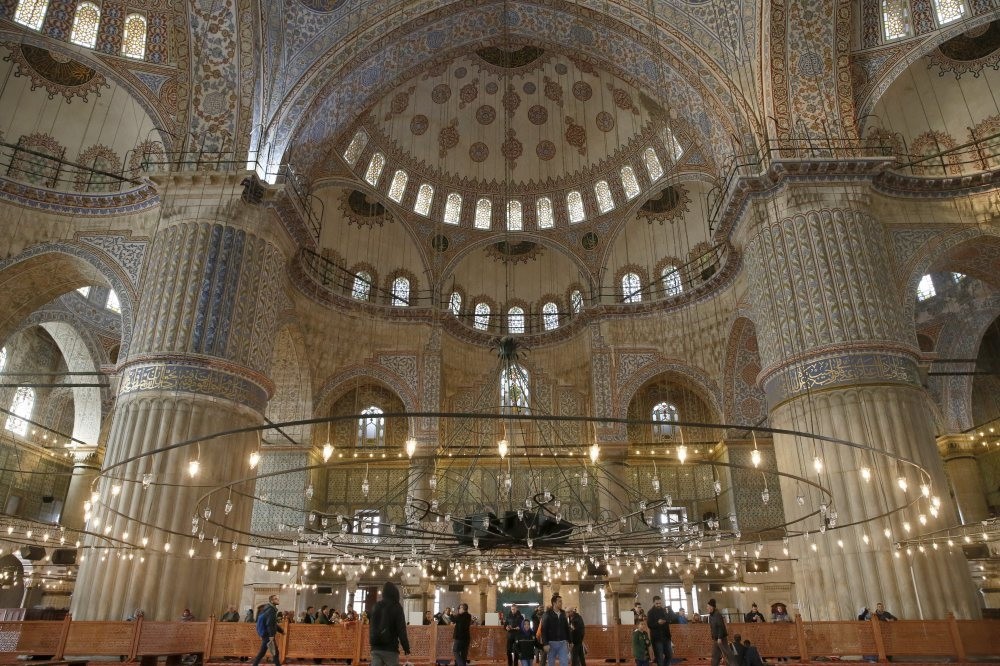A great architect under Sinan's shadow: Sedefkar Mehmet Agha

Istanbul has many monumental buildings. The most famous one, undoubtedly, is the Blue Mosque. The architect of this wonderful mosque was designed by Sedefkar Mehmed Agha. When talking about Ottoman-era architecture, we must speak about this brilliant architect. Sadly, he does not get the attention that he deserves.There is very little information about Sedefkar Mehmed Agha's early life. But it is thought that he was born in Elbasan, Albania, around 1540 based on the travelogue by 17th century traveler Evliya Çelebi, who said in "Seyahatnâme," that Sedefkar Mehmet was from Elbasan because he built so many fountains there.We take his life's milestones from his autobiographic work, "Risale-i Mimariye" (Treatise on Architecture). According to the book, Sedefkar Mehmed came to Istanbul in 1563. At first, his purpose was to be a janissary. He became a cadet for six years. After that, Mehmed began to study music. During the harsh educational process at the Enderun School (a special high school in Ottoman times) he took various types of training. One was the engraving of the mother-of-pearl (nacre, sedef). His appellation, "Sedefkar" (mother-of-pearl engraver), comes from that career.Sedefkar Mehmed was interested in geometry when he was at Enderun. He attended geometry lessons and was approved for lessons to become an architect. He was an apprentice to the greatest architects of the time: Sinan the Architect, the architect of the Süleymaniye and Selimiye mosques, Davut Agha, builder of the New Mosque (in Eminönü), and Dalgıç Ahmet Agha. Sedefkar Mehmed became their student for over 20 years. After these grand masters' deaths, Sedefkar Mehmed became the chief architect in the Ottoman Empire.But before this important position, Sedefkar Mehmed was situated in very different places. He first worked as an architect in Manisa (a western city of Anatolia) where he was appointed to finish the Muradiye Mosque, which had been started by Sinan the Architect. He completed the mosque in a short time with great success.Besides his architecture, Sedefkar Mehmed Aga never gave up engraving nacre. Possibly from the advice of his master Sinan, Mehmed made a bookrest with nacre embroidery for Sultan Murad III. Due to this gift, he received a promotion and became bevvab (gate keeper). That is to say, he found a way to return to Istanbul.Following the death of Sinan the Architect in 1588, Sedefkar Mehmed was put in charge of the waterways. Actually, he hoped to become Sinan's successor, but the Grand Vizier appointed Davut Agha to head the architect position. Nonetheless, he agreed to this office. When he made another richly garnished quiver for the sultan in 1591, he was promoted to Chief Bailiff.In the same year, he was sent to Diyarbakır (eastern Anatolia) as a supervisor. During his duty he traveled across Arabia, Egypt and the Balkans. In 1597 he was brought again to head the waterways. About that time, Sedefkar Mehmed Agha was ordered to make a special throne for Sultan Ahmet I. He made it from walnuts with wonderful nacre and tortoise shell engravings (it can be seen today in Topkapı Palace).During the period of Sultan Ahmed I, Sedefkâr Mehmed was designated as chief architect. Ahmed I commissioned him to build a unique mosque on his behalf: The Blue Mosque, also known as Sultanahmet Mosque. From 1609 to 1616 he worked on this magnificent building. Although the state was in dire straits in terms of economics, military and politics, no cost was spared for the Blue Mosque.The Blue Mosque's ornaments were made exclusively in the empire's best tile workshops in İznik. The dominant color of the interior design, and the name of the building, comes from these blue tiles. It can be said that, when this mosque was finished, it overshadowed Hagia Sophia and the Süleymaniye Mosque.This building was a swan song. Sedefkar Mehmed died shortly after completing the Blue Mosque. A number of his mosques, waterways, tombs and fountains still remain to be seen in various corners of Istanbul. Besides his architectural works, his autobiographical book "Treatise on Architecture," is still a very important piece of Ottoman architectural history.We rarely cite him and his works today. He was one of the most significant architects of the Ottoman Empire, but unfortunately, Sedefkar Mehmed Agha is virtually unknown, historically speaking.
